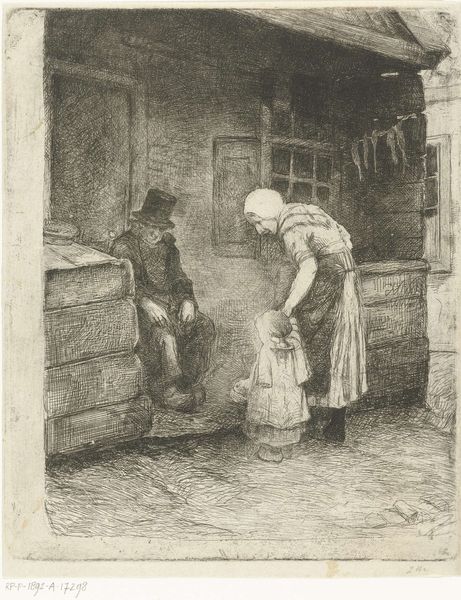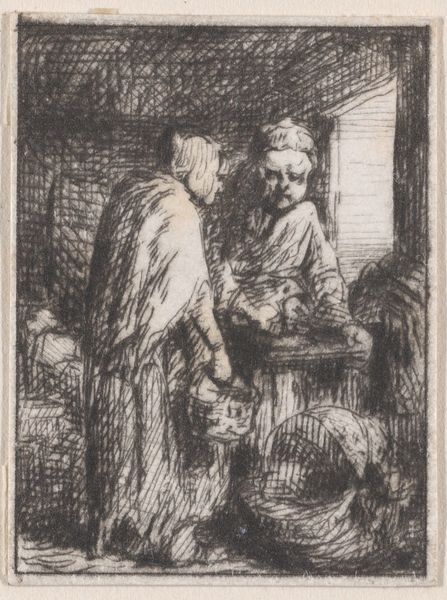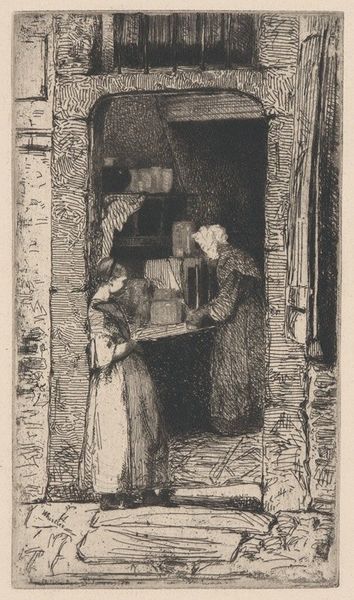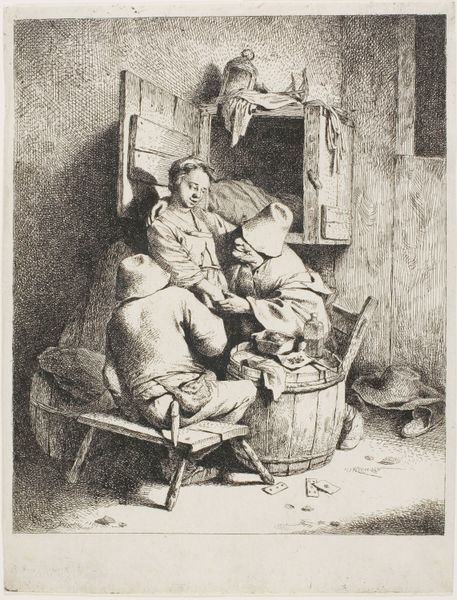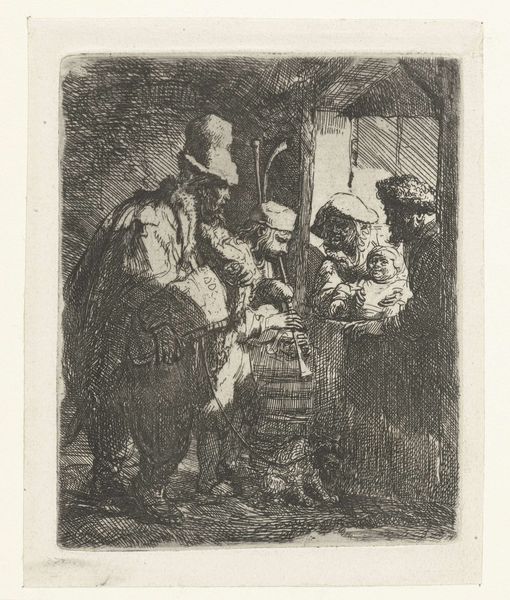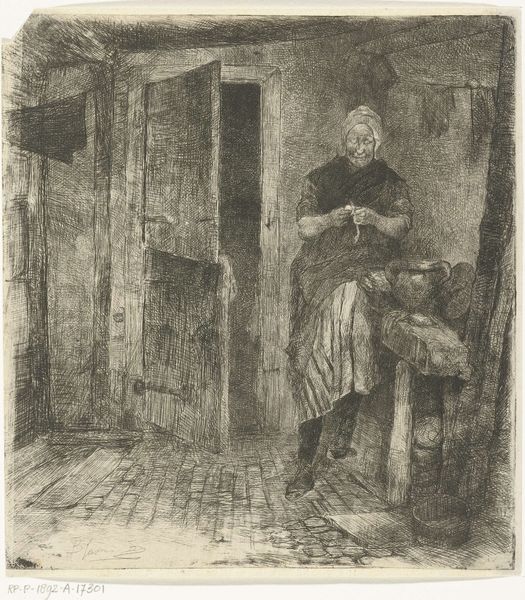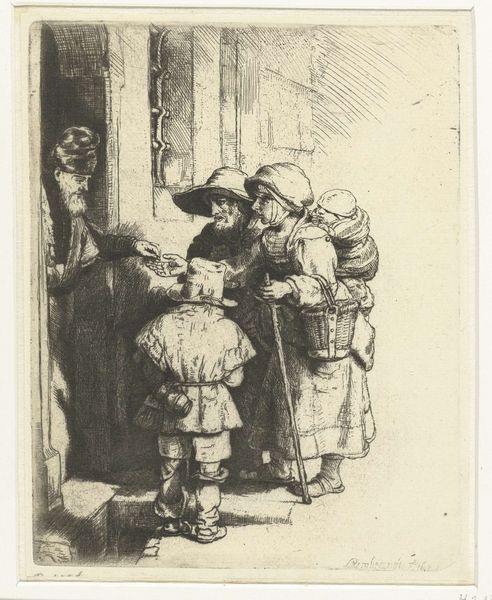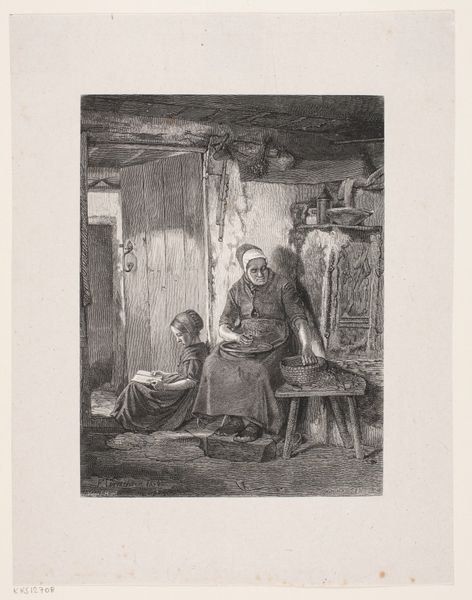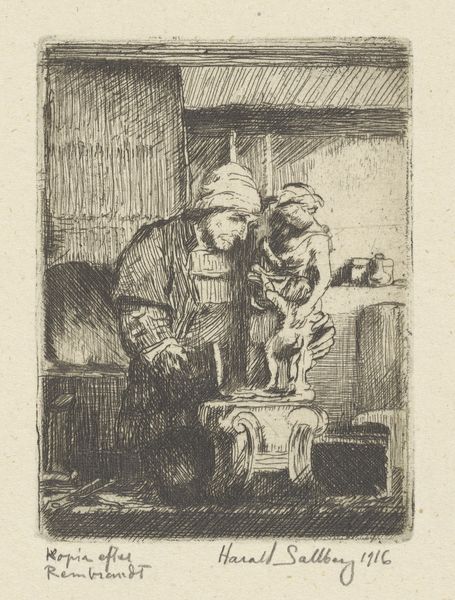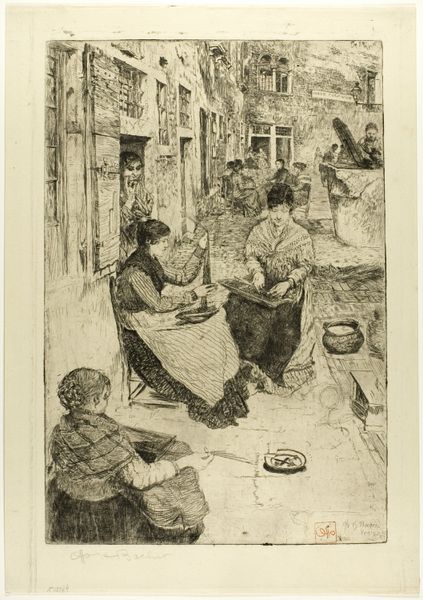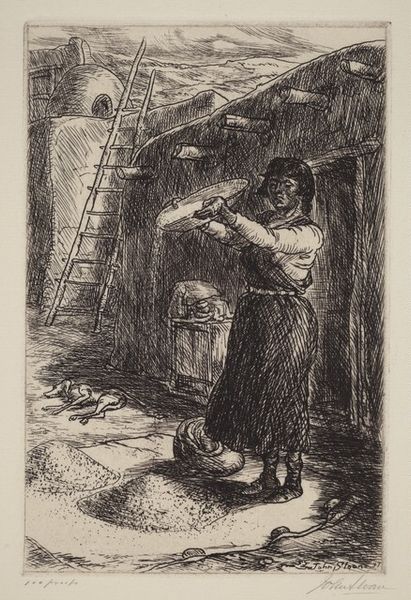
Vrouw met klein kind staat bij zittende oude man voor arbeiderswoning 1855 - 1892
0:00
0:00
drawing, print, etching, paper
#
portrait
#
pencil drawn
#
drawing
#
light pencil work
# print
#
etching
#
pencil sketch
#
figuration
#
paper
#
pencil drawing
#
pencil work
#
genre-painting
#
northern-renaissance
#
realism
Dimensions: height 188 mm, width 152 mm
Copyright: Rijks Museum: Open Domain
This etching by Bernardus Johannes Blommers captures a scene of domestic life, focusing on a woman and child in front of a worker's dwelling. The technique of etching itself is significant here. It involves covering a metal plate with a waxy, acid-resistant layer, drawing through this layer to expose the metal, and then immersing the plate in acid. The acid bites into the exposed lines, creating grooves that hold ink. The plate is then wiped clean, leaving ink only in these etched lines. The resulting image has a directness and intimacy, perfectly suited to the subject matter. The lines are not as precise as in an engraving, giving a more spontaneous feel. Blommers uses this to great effect, capturing the texture of the rough walls and the worn clothing of the figures. The choice of etching as a medium, combined with the scene depicted, speaks volumes about Blommers's artistic intent. He elevates the everyday life of the working class to a subject worthy of artistic attention, challenging traditional hierarchies within the art world. It reminds us that materials and making are always intertwined with social context.
Comments
No comments
Be the first to comment and join the conversation on the ultimate creative platform.

